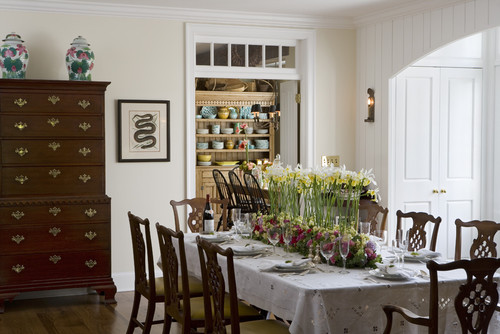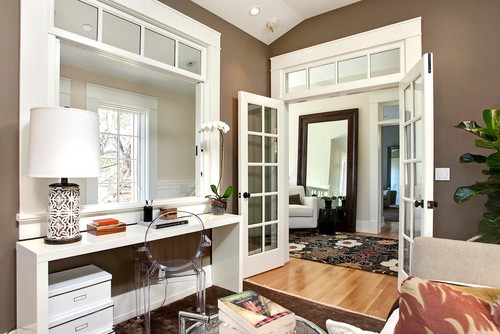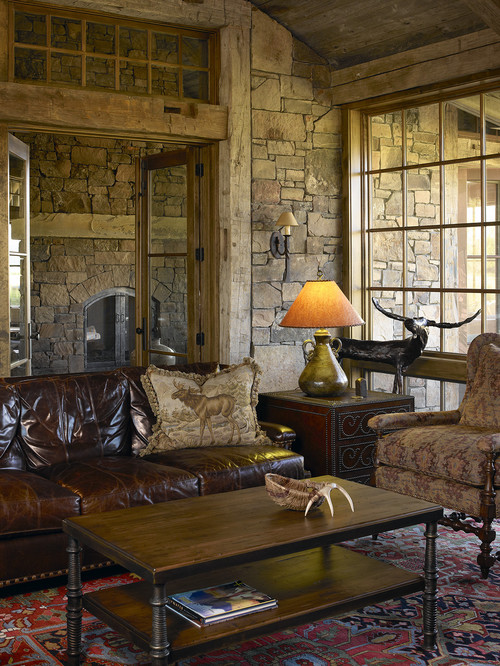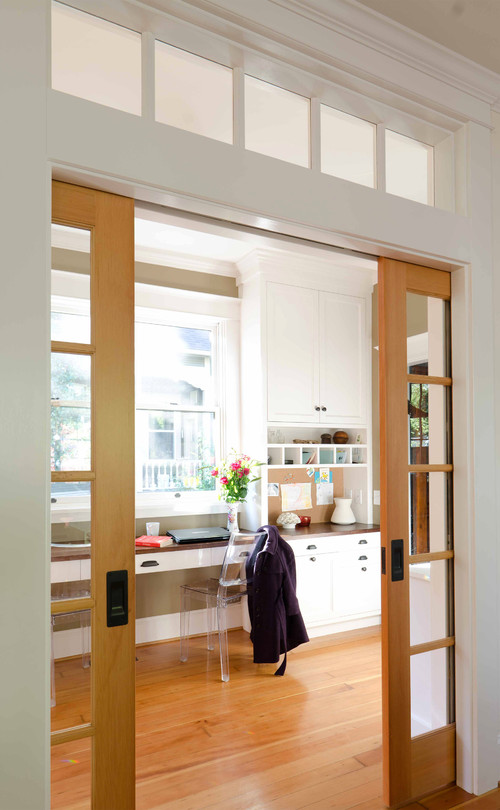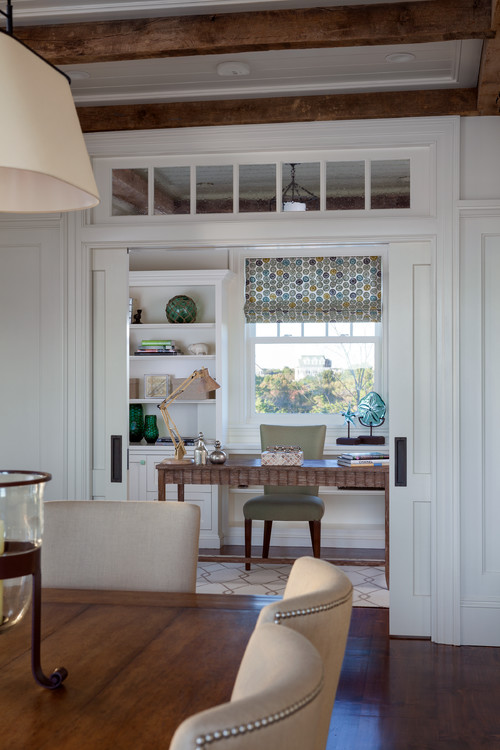Interior Transom Window Over French Doors
How to Use This Page
Each picture below contains a Measure & Plan button. Click this button to go directly to measuring and planning videos for the picture you see.
Standard Installation
Double doors are often used for room transitions so adjoining rooms can occasionally be closed off from one another. A transom over a double door better visually connects the two rooms and shares light between the two.
Pro-Tip: The pattern or design of the muntins for the transom usually does not align with the muntin bars or stiles of the doors below. This is normal -- there is no need to align them.
STANDARD: Stained doors and transom separating two rooms
STANDARD: Transom windows and doors separating dining from kitchen
STANDARD: Transoms on opposing walls
Variation - Taller Mull
A taller mull is an increased thickness of the area that separates the doors from the transom above. This modification to the standard installation is purely aesthetic, and can add some additional styling to an opening -- especially when combined with other trim elements in the room.
TALLER MULL: Beautiful strained transoms and doors with a taller mull
The transom below has a taller mull, but also take notice how perfectly it was sized into the opening between the fireplace and china cabinet. The double doors and transom truly connect this dining room to the adjoining sun room.
TALLER MULL: Perfect sizing makes this door-transom combination pop.

Variation - Double Pocket Doors
The picture below is perhaps a perfect example of a well executed transom over the top of a set of pocket doors. As you will learn in the planning section, because of the hardware required to hang a pocket door, transoms above pocket doors appear to have a taller mull in all circumstances.
POCKET DOOR: Fine implementation transom and pocket door in office
POCKET DOOR: Transom helps further connect this dining room with study.


